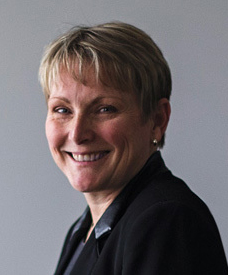
Implementing the final client-focused reforms (CFRs) by year-end is compelling firms and advisors to adjust their business models, but should be embraced as a foundation for creating more trusting client relationships.
It’s understandable that for dealers and advisors striving to harmonize their working processes with the last set of CFR regs by Dec. 31, the operational task may seem challenging. There may still be some lingering resistance internally, perhaps due to uncertainty about what is deemed “compliant behaviour” when the rules come into force as 2021 ends.
But from the perspective of the Canadian Exchange Traded Funds Association (CETFA) and our member firms, there’s every reason to accept the pending regulations with a positive and confident outlook. We believe the industry should support the CFRs in principle and its measures in practice.
Firms and advisors have already proven they can adapt to the CFRs through their adoption of the conflict-of-interest rules, which took effect at the end of June. We’re convinced they can and will now fulfil the remaining CFR provisions, namely enhanced requirements related to know your product and know your client, disclosing more about the advisor-client relationship, following a client-first suitability standard, and adhering to limits on self-promotion communications.
The CFRs can be a “win-win” proposition for firms, their advisors and their clients.
What the regulators want firms and advisors to do under the KYP regulations (which is at the heart of our interest) is to validate that they have a consistent decision-making process for delivering appropriate product recommendations and to share it with their clients. In our opinion, doing so will underscore advisor professionalism, which should reinforce relationships with clients.
As a key part of that selection method, advisors must weigh and communicate product cost and its impact on returns. We believe this transparency obligation will encourage advisors to increasingly explore ETFs as part of the investing solutions they offer clients.
The CFRs are really about formalizing and documenting processes to prove they’re followed
CETFA spoke with Alice Ambrosie, vice-president, practice management with CI Global Asset Management, and found we’re like-minded in viewing the CFRs through a positive lens.
“We saw it as an opportunity to help advisors to understand the changes, to provide guidance on how to embrace the spirit of the rules, and to properly serve their clients, while leaving operational implementation to their individual firms,” Ambrosie told us.
“We’ve found that many advisors we’ve presented to were anxious about CFR because of their regulatory obligation and because the rules tend to be expressed at a high level and are therefore hard to interpret,” Ambrosie noted.
However, many financial advisors were already satisfying the rules: they’re much better prepared than they believe and become more confident they’re moving in the right direction after receiving more education, she added. “So it’s really about formalizing and documenting their processes to be able to prove they are properly servicing their clients and can articulate that they’re following the rules — to go from ‘blind trust’ to ‘smart trust.’”
CETFA believes advisors and firms should actively support the pending changes required under the CFRs and apply them consistently with existing clients and when cultivating prospective clients.
The KYP responsibilities, specifically, are a call to advisors to learn more about the (typically) lower cost and other benefits many ETFs offer. Beyond our ETF Screener (developed with Morningstar Canada), we offer a variety of other supportive resources, including an in-depth Guide to the Canadian ETF Industry, on our website. For detailed, technical information about CFR, start by visiting the Canadian Securities Administrators’ Client Focused Reforms page.
Pat Dunwoody is the executive director of the Canadian Exchange Traded Funds Association (CETFA).
